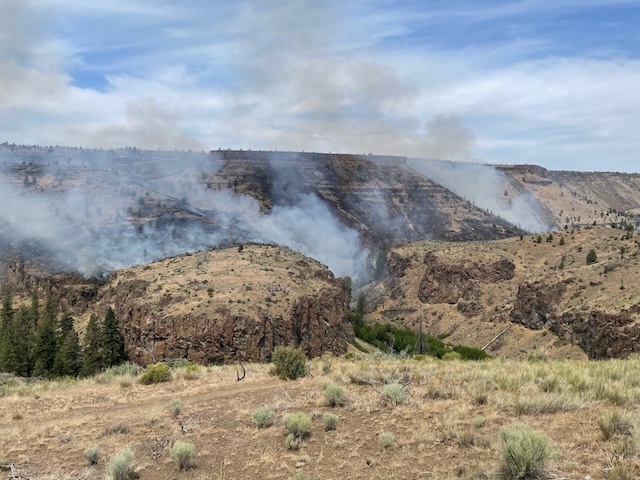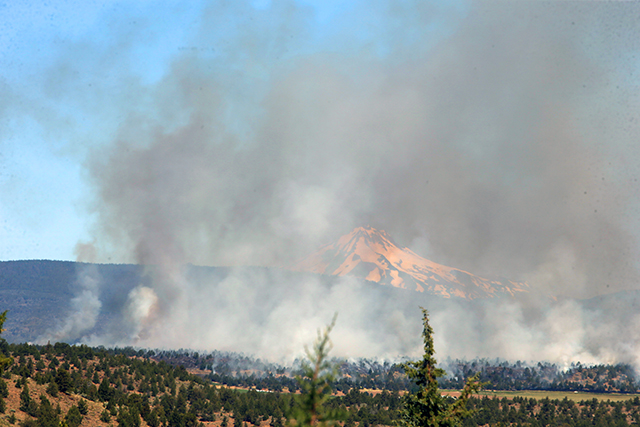Newberry geothermal projects get $30M boost
Published 5:00 am Friday, October 30, 2009
Geothermal projects at Newberry Crater will receive $30 million in federal stimulus money, the U.S. Department of Energy announced Thursday, allowing a new partnership to test a technique that pumps water deep down into hot rocks to generate power.
“You’re basically creating a geothermal system,” said Doug Perry, the president of Davenport Power.
Davenport is partnering with AltaRock Energy, a California-based company, on the project just to the west of Newberry National Volcanic Monument. AltaRock will receive $25 million of stimulus money — the largest amount given to a single project — and will use the funds to demonstrate the method called engineered geothermal systems.
In a traditional geothermal project, crews drill down to a site where a combination of very hot rocks and water naturally creates steam or hot water. That steam or water is piped up to a power plant, where it is used to turn turbines and generate power.
That’s the method Davenport originally hoped to employ at its Newberry site, where in 2008 it drilled two exploratory wells about 10,000 feet below the surface. And while geologists found hot rocks, they didn’t find enough water or steam for a power plant.
But in an engineered geothermal system, also called an enhanced geothermal system, companies don’t need water or steam. They create it by adding the water to existing hot rocks.
Crews drill a deep hole to reach the hot rocks and then pump down pressurized water to fracture the rock with a network of small cracks. That network of cracks acts as a reservoir, Perry said.
The idea is to then pump water down to that reservoir, have the water flow through the hot rocks, pick up heat and then return to the surface via a second well — with the water now hot enough to turn the turbines and generate power.
“The principles are just the same as a traditional hydrothermal geothermal project,” Perry said. “The difference here is you’re helping to create the geothermal reservoir.”
The individual fractures created would be small — about 1/25th of an inch or so — but a network of the cracks could be spread out for about half a mile and be stacked up on top of each other, said Don O’Shei, the CEO of AltaRock.
“You want to create a spiderweb of fractures,” he said.
Some concerns
The method has sparked controversy after an engineered geothermal system in Basel, Switzerland, triggered an earthquake in 2006.
In that case, O’Shei said, crews drilled directly into an existing fault and used the energy of the fault to help generate the fractures. At Newberry, he said, crews will not be drilling into existing faults.
“We’re hoping to do a series of much smaller fracturing, one at a time,” O’Shei said. “Our approach, we feel, is very, very different.”
The Newberry project would be the first of its kind in the United States, he said, although other examples exist in Europe and Australia.
Davenport is in the process of setting up a system of seismic arrays to monitor any Earth movement both before and after the fracturing, said Linda Christian, an environmental specialist with the Bureau of Land Management in Prineville.
And the BLM will probably go through an additional environmental analysis, including public comment, before the companies are given the OK to start the engineered geothermal system, she said.
She can’t say for sure what the permitting process will be until she receives an official proposal.
Because engineered geothermal systems are a new technology and because of the concerns about earthquakes, the Prineville BLM will likely bring in outside experts to help with the environmental review, she said.
“It’s not something that we’re going to take lightly and just automatically permit,” Christian said. “Newberry is not considered a seismically active area. That’s what we have going for us, but there (are) definite unknowns with this technology.”
Still, she said, engineered geothermal systems could help provide new energy sources.
“New technology is needed to solve this big energy problem,” Christian said. “So we don’t want to go blindly or be not cautious about it, but we do have to look at new technology.”
What comes first
The first step of the project is to show that the geothermal companies can create a fracture system, put cool water in and get sufficient hot water out, Perry said. Then, the companies will consider adding on a power plant.
“The goal right now is to do the (engineered geothermal system), and hopefully that will be successful,” he said. “And then, if it is indeed successful, then it becomes much easier to raise more money to build out other (engineered geothermal system) wells that would support a power plant.”
Also in the Department of Energy’s stimulus announcement, Davenport Power received $5 million to test some methods for figuring out how to get better subterranean pictures of the rocks, faults and geothermal potential below an area.
“We’re going to try to do some of the new exploration techniques, and not only better understand the resource at Newberry, but hopefully come up with some procedures that can be used elsewhere in the Cascade Range,” Perry said.






